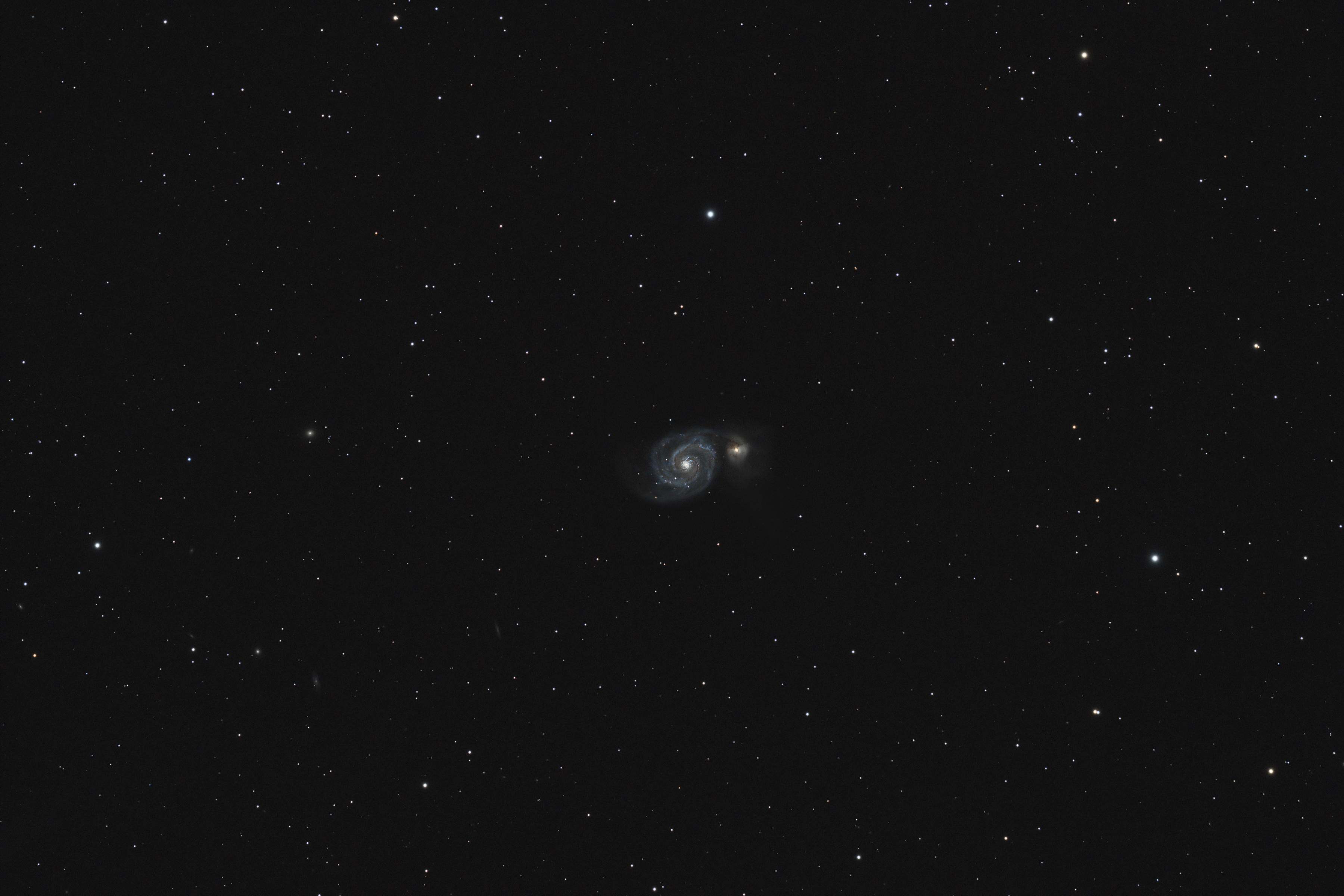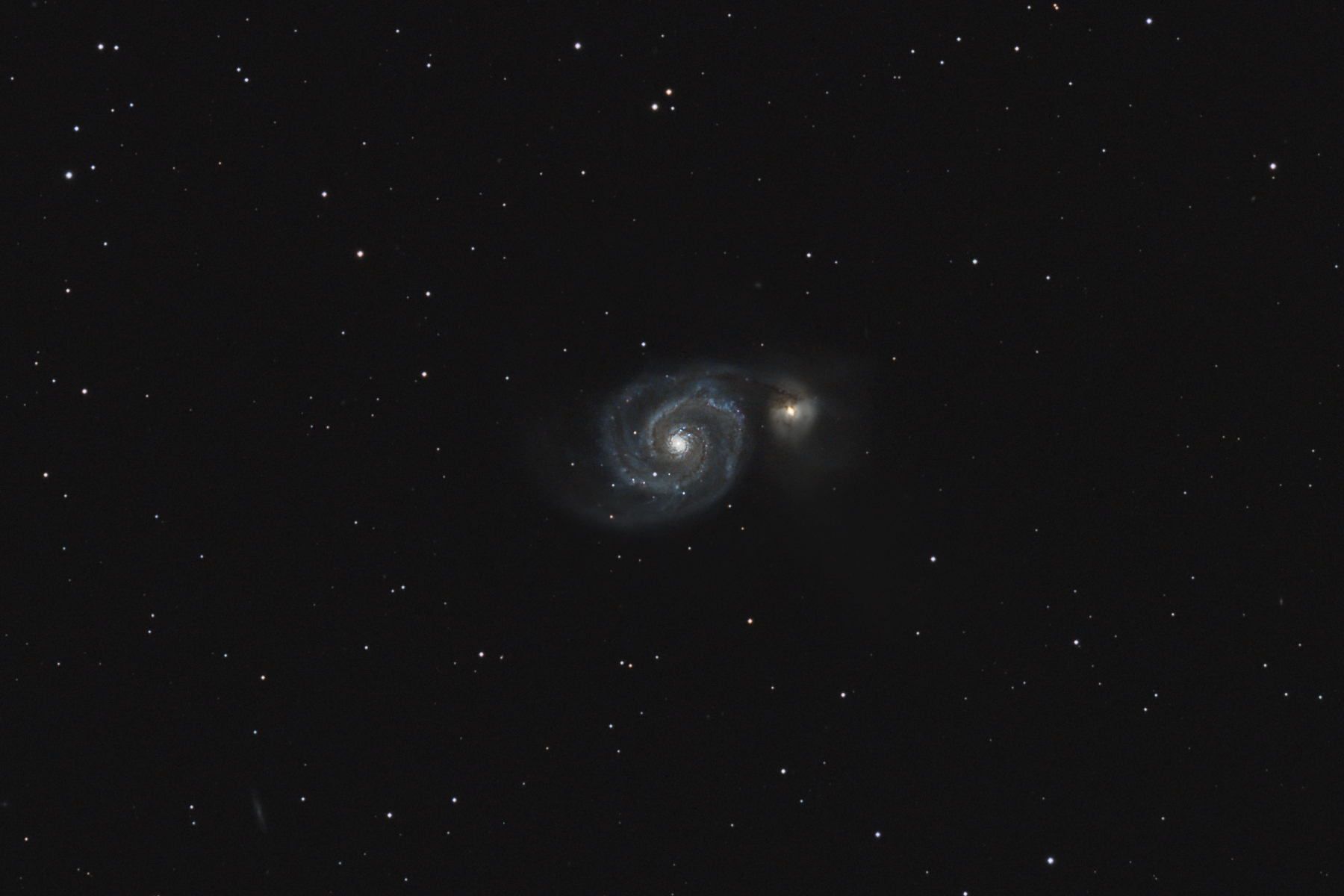In their quest to find comets, French Astronomers Charles Messier and Pierre Méchain noted interesting objects they encountered in their observations and cataloged them so they and other comet hunters would immediately know the object wasn't a comet. It was a kind of reference list and sign to say, "Not a comet. Move along. Nothing to see here."
The 51st object in Messier's list became known as the Whirlpool Galaxy, a text book example of a face-on spiral galaxy. Messier's catalog eventually came to stand at 110 objects but he did not discover all of them. Méchain discovered several of the objects and some had been discovered before they started their list. Known objects were cataloged anyway so as not to confuse them with a comet at some point down the road.
M51 he did discover... in 1773... 199 years to the day before I was born. So, obviously, I have a special connection to this galaxy. :)
You'll notice that M51 has a "partner," which some lazily refer to as M51A. The two are gravitationally interacting.
Like many deep sky objects, our understanding of it has evolved over time. Its initial discovery by Charles Messier in 1773 started a chain of events. Its companion galaxy wasn't resolved well enough to be seen as a separate object until 1781 when his friend and research partner, Méchain, made the distinction. Another 64 years went by before William Parsons, 3rd Earl of Rosse, pointed a 72" telescope at it to realize that it had a spiral structure. Still believed to be a nebula in the Milky Way, it wasn't until Edwin Hubble came along that we came to understand that M51 and objects like it are other galaxies, like our Milky Way, and not objects contained within our galaxy.
Read more about the Whirlpool Galaxy on Wikipedia.
The 51st object in Messier's list became known as the Whirlpool Galaxy, a text book example of a face-on spiral galaxy. Messier's catalog eventually came to stand at 110 objects but he did not discover all of them. Méchain discovered several of the objects and some had been discovered before they started their list. Known objects were cataloged anyway so as not to confuse them with a comet at some point down the road.
M51 he did discover... in 1773... 199 years to the day before I was born. So, obviously, I have a special connection to this galaxy. :)
 |
| A fairly wide view of M51. Just 30 minutes of data at 1000mm focal length. |
You'll notice that M51 has a "partner," which some lazily refer to as M51A. The two are gravitationally interacting.
 |
| This is the same image as above but cropped to 1800x1200. |
Like many deep sky objects, our understanding of it has evolved over time. Its initial discovery by Charles Messier in 1773 started a chain of events. Its companion galaxy wasn't resolved well enough to be seen as a separate object until 1781 when his friend and research partner, Méchain, made the distinction. Another 64 years went by before William Parsons, 3rd Earl of Rosse, pointed a 72" telescope at it to realize that it had a spiral structure. Still believed to be a nebula in the Milky Way, it wasn't until Edwin Hubble came along that we came to understand that M51 and objects like it are other galaxies, like our Milky Way, and not objects contained within our galaxy.
Read more about the Whirlpool Galaxy on Wikipedia.
Comments
Post a Comment